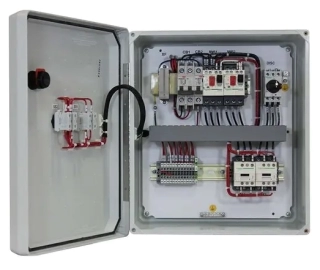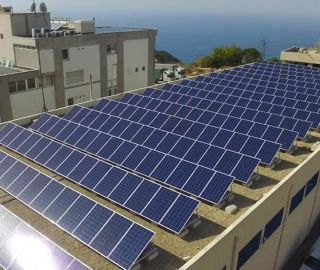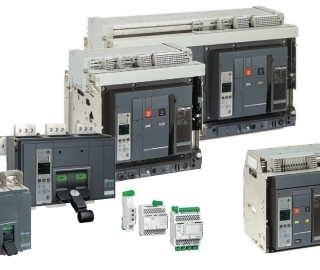
There are many answers to the question of how to calculate and estimate the costs of solar energy. You can either do it manually or by using the software. As many homes throughout the countries are considering installing solar panels/plants, questions that people commonly ask are how to calculate and estimate the solar power for the home? And what several solar panels for the home are required? You need to understand a few things to know what this means, and why it’s worth it to move on to the slightly more detailed calculation. First, “kWh/Year” stands for kilowatt-hours per year. A kilowatt-hour is an amount of electrical energy equivalent to 1,000 watts used over one hour. If you run a 10-watt light bulb for 100 hours, you use 1000-watt-hour of energy.
The average house electric power use in the United Arab Emirates (UAE) is about 20,000 kWh/year, or about 1667 kWh/month. To learn what your household electricity usage is, look at your years’ worth of utility bills.
Solar energy is an alternative source of energy that has been growing in popularity over the past few years. It’s free, clean, and renewable. It converts sun energy through photovoltaic (PV) panels into electricity without burning any fuel making it a zero-carbon alternative. But there are also some drawbacks to consider before installing solar panels on your rooftop solar panels do not work at night, and finding the right installer can be a challenging process but you can consider electrical junction for this. To answer the question, how do calculate and estimate solar power for homes? here is an example. A 5kW system consisting of 20 panels would be enough to cover 20% of a three-bedroom villa’s energy needs. The entire system would cost around AED 35,000 and a return on investment can be expected in several years. In short, if your monthly bill is between 1,500AED and 2,000AED, the system will save you between AED 250 and AED 300 a month.
The costs of operating solar panels in households will continue to drop as more and more providers enter the market but it’s always a challenging task to find the best suppliers. One of the bests solar panel suppliers in UAE are Electrical Junction which also helps you to understand solar panel installation procedures.
Calculate the cost per watt
Solar systems sizes are usually described in kilowatts (kW, where 1kW = 1,000 watts). If you are planning on installing your solar panel system, you’ll want to know how much a system will cost per watt.
One of the first things you need to think about when calculating the cost of solar power is how much electricity you will use. This is called the “capacity factor” and it’s calculated as follows.
Total KWH per Year / KWp Hours In a Year = Capacity Factor
For example, if you plan to use 1,000 kWh of electricity each year, then your capacity factor would be 0.1. If you were able to generate 1,500 kWh of electricity during the same period, then your capacity factor becomes 0.15.
Determine how much electricity you need
Every device or appliance in your household contributes to the total sum of the electricity bill. To figure out how much energy appliances and devices are used, you can estimate the total power requirement of the electricity. There is a label at the back of each device that lists the watts that it uses. This is the number that you will need to figure out your energy usage and requirements. Along with the watts, you will need to estimate the number of hours each day that device or appliance is used. If you prefer to not check all your devices manually, you can purchase a device to help you to estimate energy usage.
To estimate your household energy usage, the following sources can help:
- Electric bills
- Equipment ratings
- Expected load profiles
The total amount of energy used by your household can be calculated simply by using the below easy steps:
- List the number of watts for each appliance.
- Estimate the average daily use.
- Multiply the unit’s wattage by the number of hours you use it. For example, if you use a 120-watt television for two hours per day. You can multiply the wattage by the number of hours used per day to obtain 240 watt-hours per day.
Choose between grid-tied or off-grid systems
Having a grid-tied solar power system means that you still have a connection to your local power service grid. If the electricity demand from your house is greater than the power produced from your solar panels, then this solar power system comes into play. In other words, this type of system is useful when you need more power than what your solar panels have produced.
An off-grid solar power system is pretty much exactly what the word is – being off-grid. These solar power systems are completely independent of your local power grid, meaning you rely fully on what power your panels produce to run your household or activity.
How Does a Grid-Tied Solar System Work?
Grid-tied systems work by having solar panels that provide power to your house (through an inverter) along with a connection to your local utility grid. Your house will run on solar power until the demand is higher than what is available, then your house will switch to using power from your local utility grid connection.
How Does an Off-Grid Solar System Work?
The standalone solar power option which keeps you completely off-grid is a good alternative if you want or need to be fully independent of the local utility grid. In other words, you’ll be completely power-independent due to your solar panels. This power will run from your panels to a set of solar storage batteries, through an off-grid inverter, and straight into your household.
Depending upon your energy requirements and investments you should choose between a grid-tied or off-grid system, both have pros and cons but it’s always better to choose as per one’s requirements.





